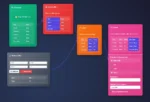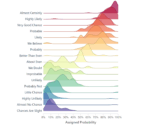In the digital age, businesses increasingly grapple with datasets characterized by cyclical patterns—data fluctuating over regular intervals, such as hourly website traffic, seasonal sales performance, or monthly system loads. As decision-makers, interpreting these cyclical patterns accurately and intuitively becomes crucial for effective strategic planning. At our software consulting firm, we constantly explore innovative visualization methods to elevate your analytical insights, bridging complex data patterns to actionable business strategies. One compelling strategy for exploring cyclical data lies in radial visualization techniques—visual storytelling tools specifically designed to illuminate cyclicity and periodic behaviors clearly. In this article, we delve deep into the strategic advantages, implementation best practices, and real-world benefits of adopting radial visualization techniques in your analytics workflow.
Why Radial Visualization Techniques Excel in Cyclical Data Interpretation
Linear or conventional visualization approaches—such as simple line or bar charts—often fall short in effectively highlighting repetitive patterns embedded within cyclical datasets. Radial visualizations, by contrast, map temporal or periodic data around a circle, intuitively capturing repeating structures and periodicities. Their inherent circularity naturally aligns with the cyclical nature of business reality, whether you’re monitoring seasonal sales fluctuations or tracking hourly performance metrics. Radial visualizations immediately draw attention to deviations, shifts, or consistencies that might otherwise go unnoticed within linear frameworks.
Moreover, radial visualizations uniquely harness human visual intuition. The human eye quickly detects deviations on circular representations, identifying anomalies almost immediately. This capability significantly reduces cognitive load and enables faster decision-making. For executives and technical leaders working in high-stakes environments, detecting irregularities quickly leads to swift strategic interventions.
Incorporating radial visualization strategies aligns perfectly with our firm’s commitment to data-driven innovation. Often, businesses deal with legacy reporting or processing systems that seem challenging to upgrade without significant downtime or costly replacements. Our experts help organizations strategically innovate inside existing legacy systems without completely replacing them, maximizing technology investments while smoothly integrating new analytic techniques.
Types of Radial Visualization Techniques to Consider
Radial Line Graphs (Circular Time-Series Charts)
Radial line graphs plot periodic data points around a circle, often mapping repeating timeframes such as 24-hour periods, weekly cycles, or annual seasonality. These visualizations create strength through density, capturing large time series datasets in one easily interpretable graph. Clock-like visual references greatly assist stakeholders in rapidly identifying patterns and disruptions within familiar periodic frameworks such as hourly system monitoring or consumer traffic patterns.
Chord Diagrams
Chord diagrams are another powerful radial visualization widely adopted by technical teams seeking clarity in relationship mapping. Systems with cyclic or interconnected relationships like energy consumption, travel flow, or website navigation paths benefit substantially from chord diagram visualizations. Chord diagrams quickly allow decision-makers and analytics teams to detect relationships, dependencies, and bottlenecks that might remain obscured in linear representations.
Sunburst Charts and Radial Tree Maps
Both sunburst charts and radial tree maps are hierarchical radial visualizations that dramatically amplify organizational understanding of nested cyclical data. When exploring data across multiple layers—customer segmentation, product categories, or geographical market regions—these charts communicate nested structures clearly. Each radial segment expands outward, enabling teams to identify nested cyclicities, drill down into sub-categories, and perform complex trend analysis intuitively.
Integrating these visualization forms effectively requires careful planning with your existing analytics platforms. Our experienced team provides specialized advanced ETL consulting services, ensuring that your data integration practices smoothly support sophisticated radial visualization implementations.
Strategic Implementation: Best Practices for Radial Visualizations
Developing effective radial visualizations isn’t merely about choosing the right chart; it’s also about intelligent data management and robust visualization integration. First, determine your dataset’s true cyclical nature and assess frequencies carefully to match your visualization approach: daily, weekly, monthly, or seasonal cyclicality must align directly with your chosen visualization type.
Second, ensure quality data ingestion and timely streaming of fresh data sets, particularly when real-time radial visualizations assist business-critical operations, such as load management or financial monitoring. Enterprise organizations often struggle with slow or batch-mode data collection systems. Leveraging solutions evaluated in our recent analysis of stream batch unification through a Lambda architecture implementation, businesses can enrich visualizations with both current and historical perspectives without latency bottlenecks.
Third, choose the appropriate technology stack that supports visualizing cyclical data effectively—from open-source D3.js for customized, interactive visuals, dedicated cloud analytics platforms like Tableau or Power BI, or custom integrations utilizing BigQuery databases engineered for high adaptability. Furthermore, our intrinsic expertise includes innovative approaches like sending XML data seamlessly into Google BigQuery using Node.js. This flexibility allows radial visualizations to scale with evolving business landscapes.
Leveraging Radial Visualizations to Drive Business Innovation
C-level executives, business unit leaders, and technology strategists benefit immensely from harnassing cyclical insights presented through radial visualization strategies. With immediate clarity around complex periodic and relational datasets, executives can swiftly identify seasonal opportunities or anticipate possible infrastructure constraints before they manifest into expensive operational incidents. Additionally, sales and marketing teams harness this cyclical clarity to optimize promotional schedules, campaign timings, and resource allocation across multiple geographic or temporal regions. Thus, your team cultivates a competitive advantage through visualization-driven strategic innovation.
Radial visualizations also facilitate predictive analytics more intuitively. Allied with modern Natural Language Processing (NLP) techniques—covered extensively in our guide on the basics of Natural Language Processing (NLP)—businesses can complement structured numeric cyclical visualizations with customer sentiment cycles identified through NLP analytics, amplifying predictive accuracy and effectiveness.
Analytics maturity is often hindered by outdated or sub-optimal server technologies. Regularly upgrading analytics infrastructure strengthens capability to support high-performance visual analytics, such as radial visualization platforms. Our consulting expertise ensures streamlined transitions, including guiding teams through complex tasks like upgrading and restoring servers like Tableau Server, essential for stability and scalability in analytics ecosystems.
Real-World Applications: Radial Visualization Case Studies
Organizations worldwide have significantly benefited from radial visualization implementations. For example, a recent project involved sending LinkedIn advertising interaction data into Google Cloud infrastructure using Node.js, detailed in our insights regarding sending LinkedIn data to Google Big Query using Node.js. This cyclically-jagged dataset required precise visualization to forecast optimal posting times and target market effectiveness. Transitioning to radial visualizations enabled the marketing department to rapidly assess cyclical interactions typically obscured through standard linear reporting.
Similarly, public utilities increasingly leverage radial visualization strategies to dynamically monitor electricity consumption trends throughout the daily and annual cycles. Radial visualization techniques allowed utilities to rapidly detect unusual consumption patterns, enabling swifter interventions, optimized resource deployment, and noticeably reduced operational inefficiencies. These real-world case studies illustrate practically and strategically interweaving radial visualization techniques within concrete business contexts that translate directly into tangible ROI and innovation leadership.
Conclusion: Transforming Cyclical Data into Strategic Assets
In conclusion, radial visualization techniques represent imperative innovation channels for transforming cyclical data patterns into clearly discernible opportunities and actionable intelligence. As data volumes scale and complexity grows, businesses must upgrade traditional visualization techniques to stay competitive and agile. Partnering with specialists knowledgeable in analytics innovation, ETL optimization, and advanced visualization techniques helps transform your cyclical data into sustainable competitive advantages.
Ready to unleash your data’s full analytic potential? Contact us to explore how cutting-edge radial visualization strategies can redefine decision-making, streamline analytics processes, and inspire business innovation.
Thank you for your support, follow DEV3LOPCOM, LLC on LinkedIn and YouTube.



















